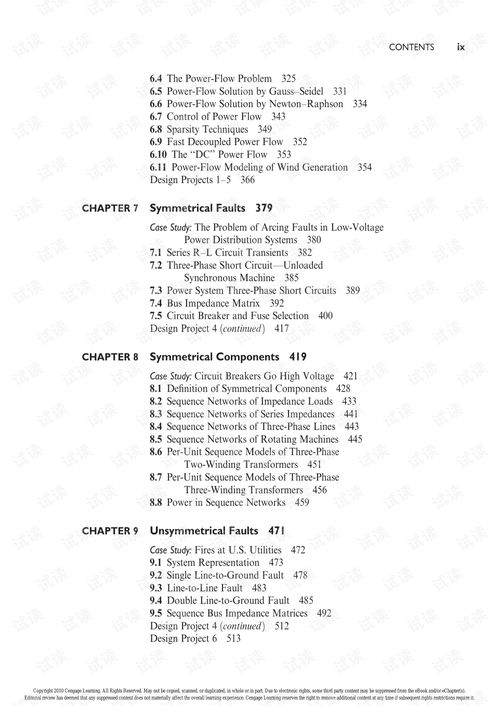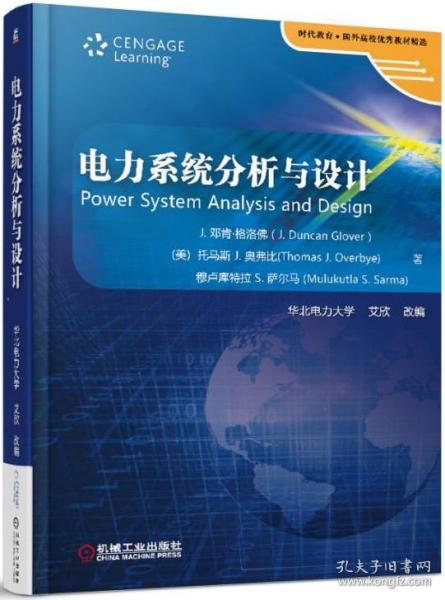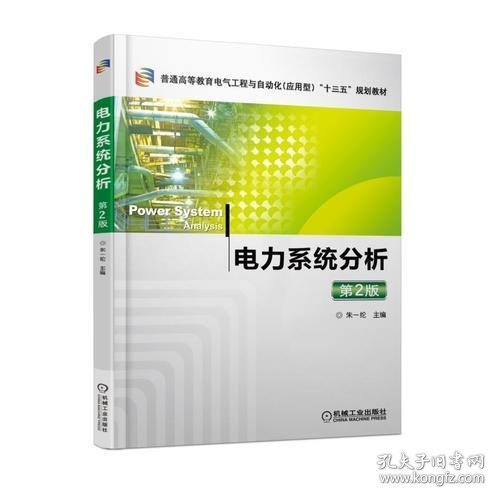
电力系统分析 英文版,Introduction to Power System Analysis
时间:2024-10-04 来源:网络 人气:
Introduction to Power System Analysis

Power system analysis is a critical field of study in electrical engineering, focusing on the design, operation, and control of electrical power systems. It involves the study of the generation, transmission, distribution, and utilization of electrical energy. This article aims to provide an overview of power system analysis, its importance, and the key concepts involved.
Importance of Power System Analysis

Power system analysis is essential for ensuring the reliable, efficient, and safe operation of electrical power systems. It helps engineers and operators to understand the behavior of power systems under various conditions, such as normal operation, faults, and disturbances. By analyzing power systems, engineers can optimize the design, operation, and maintenance of power infrastructure, leading to improved performance, reduced costs, and enhanced safety.
Key Concepts in Power System Analysis

Several key concepts are fundamental to power system analysis:
1. Power Flow Analysis
Power flow analysis, also known as load flow analysis, is a mathematical technique used to determine the steady-state operating conditions of a power system. It involves calculating the voltage magnitude and phase angle at each bus, as well as the power flow on each transmission line. This analysis helps in understanding the distribution of power within the system and identifying potential bottlenecks or overloads.
2. Fault Analysis
Fault analysis involves studying the effects of faults, such as short circuits or insulation failures, on the power system. It helps in determining the fault current, fault location, and the resulting system response. This information is crucial for designing protective schemes and ensuring the safety of power system components.
3. Stability Analysis
Stability analysis is essential for ensuring the reliable operation of power systems. It involves studying the response of power systems to disturbances, such as load changes or faults, and determining whether the system can return to a stable operating condition. There are two types of stability: transient stability and steady-state stability. Transient stability refers to the ability of the system to maintain synchronism after a disturbance, while steady-state stability refers to the ability of the system to maintain its operating conditions after a disturbance.
4. Voltage Stability
Voltage stability is the ability of a power system to maintain acceptable voltage levels at all buses during normal and contingency conditions. Voltage instability can lead to voltage collapse, which can cause widespread blackouts. Voltage stability analysis helps in identifying potential voltage instability issues and designing mitigation measures.
5. Power System Protection
Power system protection involves the design and implementation of protective schemes to detect and isolate faults from the power system. This ensures the safety of power system components and minimizes the impact of faults on the system's operation. Protection devices, such as relays and circuit breakers, are used to detect faults and disconnect faulty components from the system.
Tools and Techniques in Power System Analysis

Several tools and techniques are used in power system analysis:
2. Simulation Software
3. Optimization Techniques
Optimization techniques, such as linear programming, nonlinear programming, and genetic algorithms, are used to optimize the operation of power systems. These techniques help in minimizing costs, improving efficiency, and enhancing the reliability of power infrastructure.
Conclusion

Power system analysis is a vital field of study that plays a crucial role in the design, operation, and maintenance of electrical power systems. By understanding the key concepts, tools, and techniques involved in power system analysis, engineers and operators can ensure the reliable, efficient, and safe operation of power infrastructure, ultimately leading to improved performance and reduced costs.
相关推荐
教程资讯
教程资讯排行













